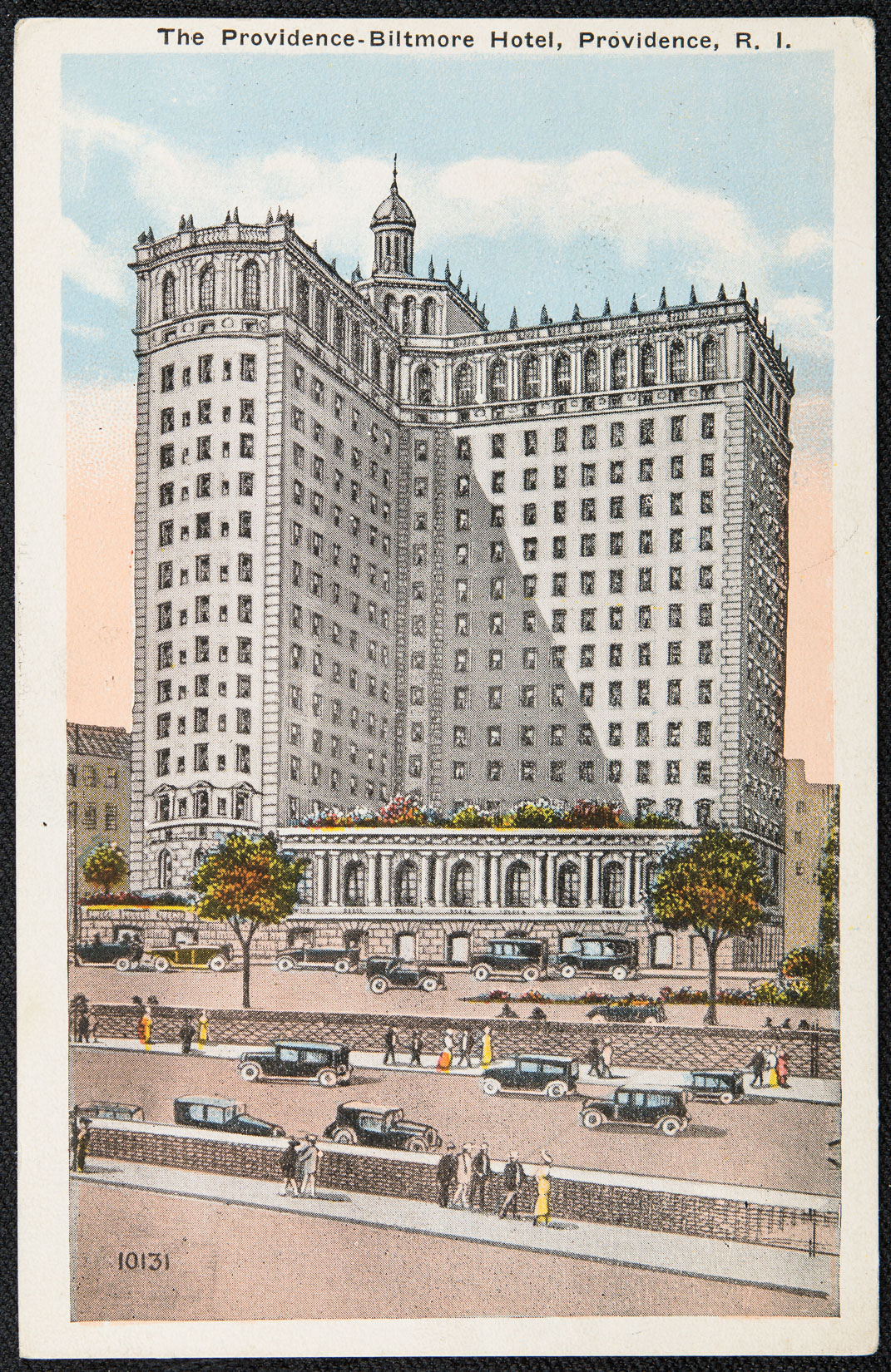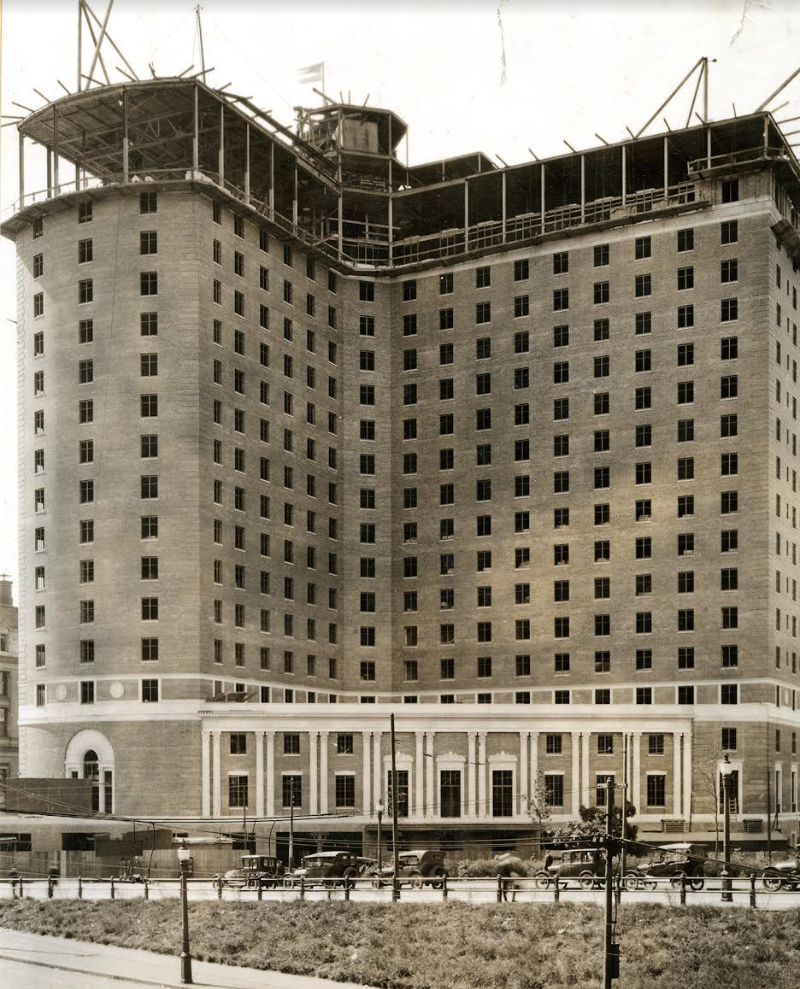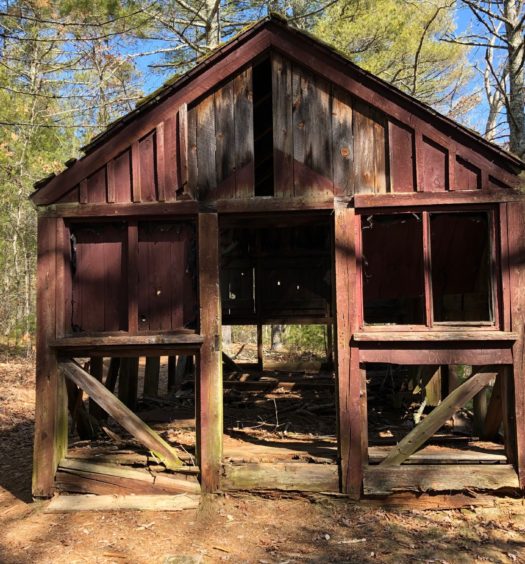There is a recent welcome addition to the library of Rhode Island history books. It is Meet Me at the Biltmore, 100 Years at Providence’s Most Storied Hotel, by Amanda Quay Blount. She has done a fine job of gathering stories and obtaining interviews from the participants connected to Providence’s once-luxury hotel. Given the Biltmore’s prominence in Rhode Island’s history, Blount has made a fine contribution to Rhode Island history.
The back of the book reads:
On June 6, 1922, thousands of people gathered in downtown Providence, Rhode Island to witness the grand opening of the most modern hotel of its day: the awe-inspiring Providence Biltmore Hotel. Since that fateful day, the Biltmore has captured the imaginations of local patrons and distant travelers alike, providing luxury accommodation to such celebrities as Babe Ruth, John F. Kennedy, Audrey Hepburn, Louis Armstrong, the Von Trapp family, Maya Angelou, the Rolling Stones, and Providence’s infamous mayor, Buddy Cianci. The story of the Biltmore is a sensational drama of scandal, secrets, and high society. With characters ranging from crooked politicians and mobsters, to bootleggers and Hollywood stars, the Biltmore has provided the backdrop for some of the the highest highs and lowest lows of Providence in the last century.
The Biltmore was located on what is today the southern corner of Kennedy Plaza at 11 Dorrance Street in downtown Providence. In 1977, it was added to the National Register of Historic Places.
The story of the Biltmore in many ways parallels that of Providence’s modern history. In the 1920s, when the Biltmore opened, it was one of the finest luxury hotels in all of New England and the only one in Providence. For a short time, it was also the tallest building in Providence. All that was a testament to Providence as a thriving city in a state that had a high standard of living due to the high percentage of factory and mill workers in the state compared to farm workers. But by the 1970s, as factory and mill jobs had left the state for the South or overseas, and Providence’s residents fled to the suburbs and its financial fortunes declined, so did those of the Biltmore. Fortunately, the historic structure survives today as the Graduate Providence hotel, with a focus on catering to the families of college students. The new owners happily have retained the hotel’s iconic neon “Biltmore” sign, despite the current hotel not using that name.
Amanda Blount fills her book with many stories and anecdotes of the famous and not-so-famous. Some of my favorite stories dealt with John F. Kennedy. Of course, he received his training as a PT boat officer at the Motor Torpedo Boat Squadrons Training Center in Melville in Portsmouth in 1942 and later stayed several more months helping to train other recruits. According to Blount, when Kennedy was on liberty and wanted to entertain friends, he often visited the Biltmore’s famed Bacchante Lounge.
On the last night of Kennedy’s campaign for the presidency, at 2 a.m. on November 7, 1960, Kennedy pulled up to the Biltmore on a bus filled with 67 staff aides and family members. Inside to greet the candidate were hundreds of campaign workers, including 130 young “Kennedy Golden Girls” waiting in a hotel parlor room. But the exhausted candidate, after a grueling day and end of the campaign, went straight to his hotel room for sleep, disappointing his admirers. The next morning, Kennedy read a critique of him in the Providence Journal for failing to spend a bit of time with his hard-working and disappointed supporters. No doubt Kennedy did not appreciate that kind of publicity on election day. Still, later in the day, Kennedy greeted an enthusiastic crowd of 25,000 packed in the square outside the Biltmore. Blount writes, “That day, voters gave Kennedy almost 64 percent of the vote from Rhode Island, his highest percentage victory from any state in the Union.” Blount continues, “After JFK’s assassination, Exchange Place was renamed Kennedy Plaza in honor of that day and in memory of Rhode Island’s beloved adopted son.”
Another favorite story involves, Antoine Gazda, who brought from Austria an new invention, the 20-millimeter antiaircraft gun that was installed on virtually all U.S. Navy ships during World War II, from PT boats to battleships. Gazda made the Biltmore his headquarters, where he coordinated the work of 26 factories in Rhode Island and nearby states to produce the gun. Unfortunately, coming from Austria, which had been taken over by Hitler’s Germany, the U.S. government considered the him to be a potentially dangerous immigrant. Accordingly, U.S. Army personnel had to accompany him wherever he went during the war. He operated from the tenth floor, in Room 1009, which no longer exists. (In one of the modern renovations to the hotel, its number of hotel rooms went from 600 to 292).
The Biltmore welcomed both black and white guests during a time when racial discrimination in public accommodations was common. Starting in 1941, the hotel paid for a listing in The Negro Motorist Green Book, a travel guide listing safe places at which Black travelers could stay.
Blount spends a good amount of space discussing the impact the hurricanes of 1938 and 1954 had on the hotel. A plaque in the hotel still marks the waterline for the 1954 Hurricane, almost seven feet off the floor.
Blount does a nice job writing of the financial problems the hotel faced toward the end of the 20th century and efforts to make it a viable hotel. She also has a chapter on movies that that include the Biltmore.
The biography of Amanda on the book’s website says the following:
Amanda Quay Blount makes her publishing debut with Meet Me At The Biltmore, a chronological history of the storied Biltmore Hotel in Providence, Rhode Island. Amanda hails from New Jersey but came to Rhode Island in 2018 and was instantly enthralled by the historic allure of the city. Amanda holds a degree in History from Rutgers University and a masters in Social Work and Community Development from Washington University in St. Louis. Meet Me At The Biltmore was researched over the course of two years and with the help of dozens of people who are interested in the historic and social relevance of the hotel. Amanda compiled thousands of primary source articles and interviews to write this book, including archives from the hotel itself. It is the only comprehensive history of the Providence Biltmore ever written, and she hopes you enjoy the story as much as she enjoyed writing it.
Blount’s book was attractively published by Stillwater Books of Pawtucket. This publishing outfit continues to do a fine job publishing Rhode Island history and other books. My only complaint was that the book lacks an index. As an author, I know that an index takes a good bit of work, usually by the author, but it is worth the effort.
Blount will be selling her book, and be available to sign them, at the Rhode Island Author Expo 2022 on Saturday, December 3, 2022, from 10 a.m. to 5 p.m. The event, in its tenth year, will be held this year at the Crowne Plaza Hotel, 801 Greenwich Avenue, Warwick, RI 02886. Booklovers should check it out and meet Amanda.





























